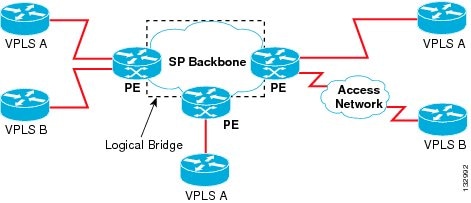Restrictions
-
A traffic loss of approximately 10 seconds is observed while removing the preferred path configuration.
-
NETCONF-YANG data model does not support template-based configuration.
-
You cannot add On-Demand (ODN) policies to the preferred path.
-
On the Cisco ASR 900 RSP3 module, you cannot use additional templates to support VPLS stats.
-
The maximum number of SR labels supported is five. This includes one or two SR service labels.
-
L2VPN over SR-TE preferred path is only supported on SR Per Destination Policy (PDP); and not on the SR Per-Flow Policy (PFP).
-
L2VPN over SR-TE preferred path can only be configured using the pseudowire interface.


 Feedback
Feedback